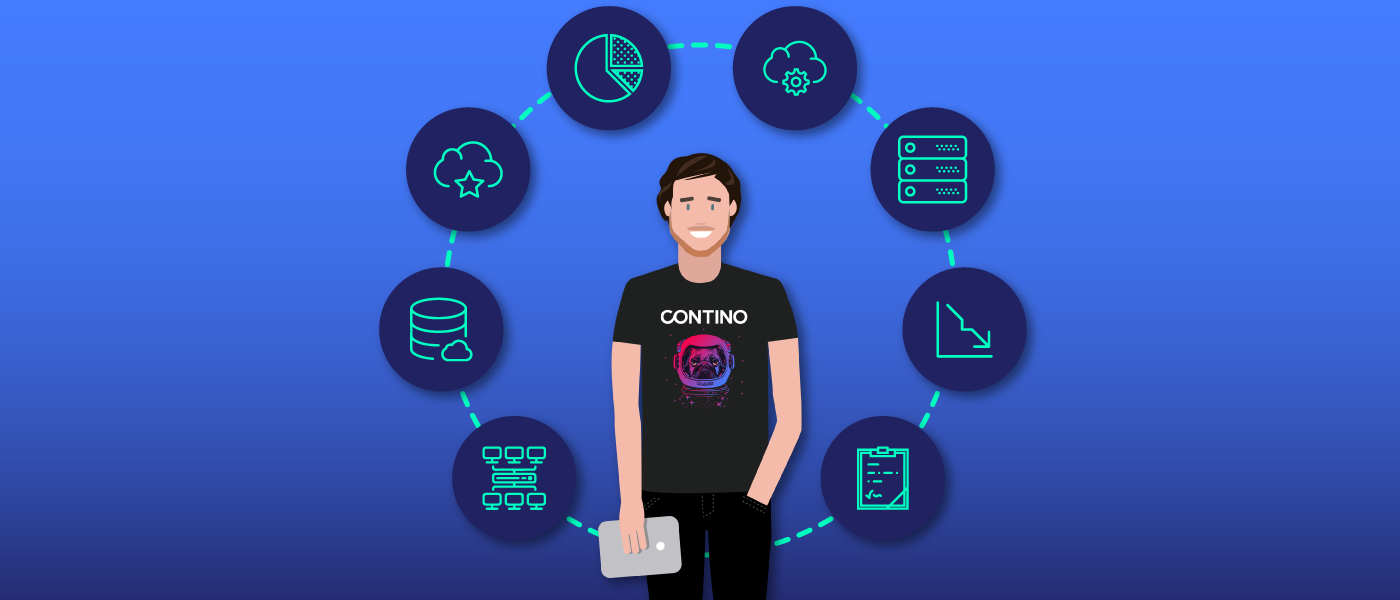What Is User-Centred Design and How Can it Boost Your Data’s Impact?
The data revolution has changed the ways companies do business, enabling them to better understand their customers, make more proactive and informed decisions and automate many tedious, manual processes.
However, not all data projects are successful and a common failure point is engaging end users.
Your data team may find fascinating insights or build highly accurate machine learning models. But too often, these insights fail to deliver value because the end users do not engage with and make use of them.
Another revolution, the user experience (UX) revolution, focuses specifically on this issue of user engagement, through the development of practices such as user centred design. User centred design has uplifted how companies develop products but still remains rare when it comes to developing data products.
This blog post will introduce you to the value and core concepts of user centred design, arguing that data projects should place a stronger emphasis on user experience. It will conclude by covering some of the important nuances that show up when applying user centred design in the data space.
The 3 Building Blocks of Good Data Science
Back when I first became interested in data science, if you’d asked me what the end goal of data science was, I would have said it is to build accurate machine learning models. The majority of data science tutorials and courses focused on how to select and fine tune models to maximise their performance on a held-out data set. Once I started working in the industry, it became quickly apparent that good data analysis alone is not enough.
To gain ongoing value from data analysis, you need good deployments, which allow you to gain ongoing, reliable insights.
Perhaps the best example of overemphasising good data analysis at the expense of deployment is the $1 million Netflix Prize, where the winning, high-performing recommendation system was never used due to the costs of deploying and maintaining it (https://www.wired.com/2012/04/netflix-prize-costs/).
Fortunately, there has been a much stronger focus recently on getting good deployments by adapting DevOps concepts for data specific needs (referred to as DataOps and MLOps). This is a rapidly developing area where most enterprises have substantial room for improvement.
However, this is still only part of the picture.
The true end-goal of data science is enabling people to achieve better outcomes, such as making easier & better decisions based on data-driven insights. This may seem like a fairly obvious statement but the majority of data science and data analysis teams, projects and courses are not structured around this end goal.
Achieving this end goal depends on ensuring that your data analysis is providing insights that end-users actually want, in a format that they will engage with. User-centred design can allow us to achieve this outcome.
What Is User-Centred Design?
User-centred design is a design philosophy that, unsurprisingly, places users at the centre of the design process.
According to user-centred design, every stage of the design and development process should be driven by an understanding of the end-users.
So rather than jumping straight to analysing data, start by engaging your users to understand their motivations, their needs, their expectations etc. This understanding of your users can then guide how you analyse your data and how you present those analyses to users.
What Are the Benefits of User-Centred Design?
By focusing on end-users you can:
- Gain and retain: Realise the potential for data to differentiate you from competitors by delivering personalised experiences that users will seek out.
- Drive success: Increase the likelihood that you gain value from your data projects by ensuring you are delivering outcomes that meet users’ needs.
- Accelerate development: Reduce the iterations needed to achieve a great outcome by following clear, user-based designs and guidance
- Increase innovation: Quickly validate the potential value of new ideas against user needs before investing in development effort.
- Deliver seamless experiences: Deliver outcomes that users intuitively grasp, giving them a more positive experience while spending fewer resources on resolving user issues.
Use Case: Adopting User-Centred Design to Enable Prediction of Customer Churn
As an example, let’s say that a customer retention team wants to predict which of their customers are likely to churn, so that they can work to retain those customers proactively. You begin building a machine learning model to predict churn risk only to realise that you have to make a lot of subjective decisions.
Should you prioritise building the most accurate model possible or would it be better to build a simpler model that is more easily interpretable?
How far in advance do you need to predict that customers will churn?
After developing a model, should the predictions be integrated into an existing interface, into a custom dashboard, weekly emails or even an automated system that contacts customers at risk?
Should you just offer a high level summary of the prediction (high risk vs low risk) or would users want details about the underlying data driving the prediction, such as long term trends and feature weights?
Having a strong understanding of the users in the retention team and the way they work could help us answer all of these questions.
For example, if the team has low trust in predictive machine learning but is very actively involved in the retention process, then they may benefit from having a detailed dashboard that presents the churn predictions alongside a range of other data that helps them understand and justify the predictions. This can help build trust in the predictions over time.
On the other hand, if they are not particularly data-savvy, you may want to spend some time simplifying this dashboard down with natural language explanations of the churn predictions.
Through understanding your users you can avoid bad design decisions and achieve an outcome that will actually be used and offer ongoing value.
User Research
User-centred design starts out with user research. Spending a small amount of time interviewing and understanding a selection of users up front can give invaluable guidance to your data projects.
This understanding of your users is often summarised in persona maps and journey maps, which can then be shared across your team to guide the design and development process.
Based on this we can design what a good outcome would look like to users and use this to guide development. Evaluating the design and developed outcome with users throughout can further ensure users’ needs are being met.
Persona Mapping
Example persona map template for a data project, adapted from this empathy map.
Persona maps (or the related ‘empathy maps’) involve distilling the defining aspects of a set of similar users into a hypothetical person (a ‘persona’). While persona maps can seem a bit ‘fluffy’, especially when you give the persona a name and backstory, they serve an important purpose.
Personas help to align designers, developers and stakeholders by ensuring that, whenever a design decision must be made, everyone is thinking about what the persona would want. This can help to avoid common pitfalls (nicely outlined in this Adobe blog) such as the ‘elastic user’ (everyone makes different assumptions about the users such that there are inconsistent assumptions and design decisions) and ‘self-referential design’ (designing based on what you would want rather than what the users would want).
Aspects like backstory and behavioural traits can help everyone empathise, remember and engage with the persona such that it is at the front of everyone’s mind through the design and development process.
Journey maps
Example journey map for planning a trip, consisting of four ‘swimlanes’ that record the key stages, the objective of each stage, the steps performed in each stage and the touchpoints involved in performing each step.
Another key summary of your user base comes in the form of journey maps. Journey maps are a chronological summary of the key steps that each persona engages in before, during and after they would potentially interact with your data product. Generally journey maps include additional ‘swimlanes’ that record more information about each step, such as the key touchpoints or painpoints.
Journey maps are important in helping you understand the context in which users will interact with your data insights. This is critical because it helps ensure that you are focusing on the larger picture of what a user’s experience will look like instead of just the immediate interactions with your data product. This can help you integrate your design so that it fits in with the user’s day more seamlessly.
Top 20 Digital Transformation Innovators
Ever wondered who the faces are behind real digital transformation?
Introducing the Top 20 Digital Transformation Innovators: Europe 2021 report.
4 Considerations for User-Centred Design for Data Analysis
While I’ve given a general overview of the user-centred design process above, there are some further points that need to be considered when applying this to data analysis.
1) We don’t know what insights we’ll find in the data
The diagram above indicates that the development process should follow the design process. However, data often contains unexpected insights; we don’t want to waste time designing an outcome only to find the data leads us in a different direction. For this reason, it is important to take an iterative approach, exploring the data before investing in any particular design and iterating on low fidelity designs while continuing to analyse the data. Once you’ve finished analysing the data and know what insights you can present to users, then you can invest more in high-fidelity designs.
2) Trust is a big factor
More so than in a lot of contexts, data analysis requires a lot of trust from your users. If users don’t trust that you will use their data responsibly, they may stop supplying it entirely. Understand your users’ expectations to avoid losing their trust. Furthermore, developing a great machine learning model is useless if the users don’t trust the predictions. Build up trust in your analyses by presenting additional context so that users can validate the predictions themselves.
3) Data can change over time
While you could develop an excellent data product that users love, data inevitably changes over time. This can impact the user experience without you knowing. This is why it is crucial to monitor your data analyses over time. This could include tracking machine learning model performance, data distributions and data quality over time.
4) Working with uncertainty
The insights from data analyses inherently contain a level of uncertainty. For example, machine learning predictions are never certain. Understanding and managing your users’ expectations is crucial so that they are not surprised by this uncertainty. For example, if developing a journey planning app, understanding your users can help you decide whether to present the most likely journey time, the worst case scenario, the range of plausible journey times or the full probability distribution of journey times.
In Summary
User-centred design is a valuable tool in uplifting the outcomes of your data projects. It has been well tested across most industries but still remains rarer than it should be in the data space. Too often, we get caught up in the excitement of machine learning and technological advancements, failing to deliver outcomes that users actually want. User-centred design has the potential to not only increase the value you gain from data but potentially accelerate the data analysis and deployment process by providing clearer focus and direction.











